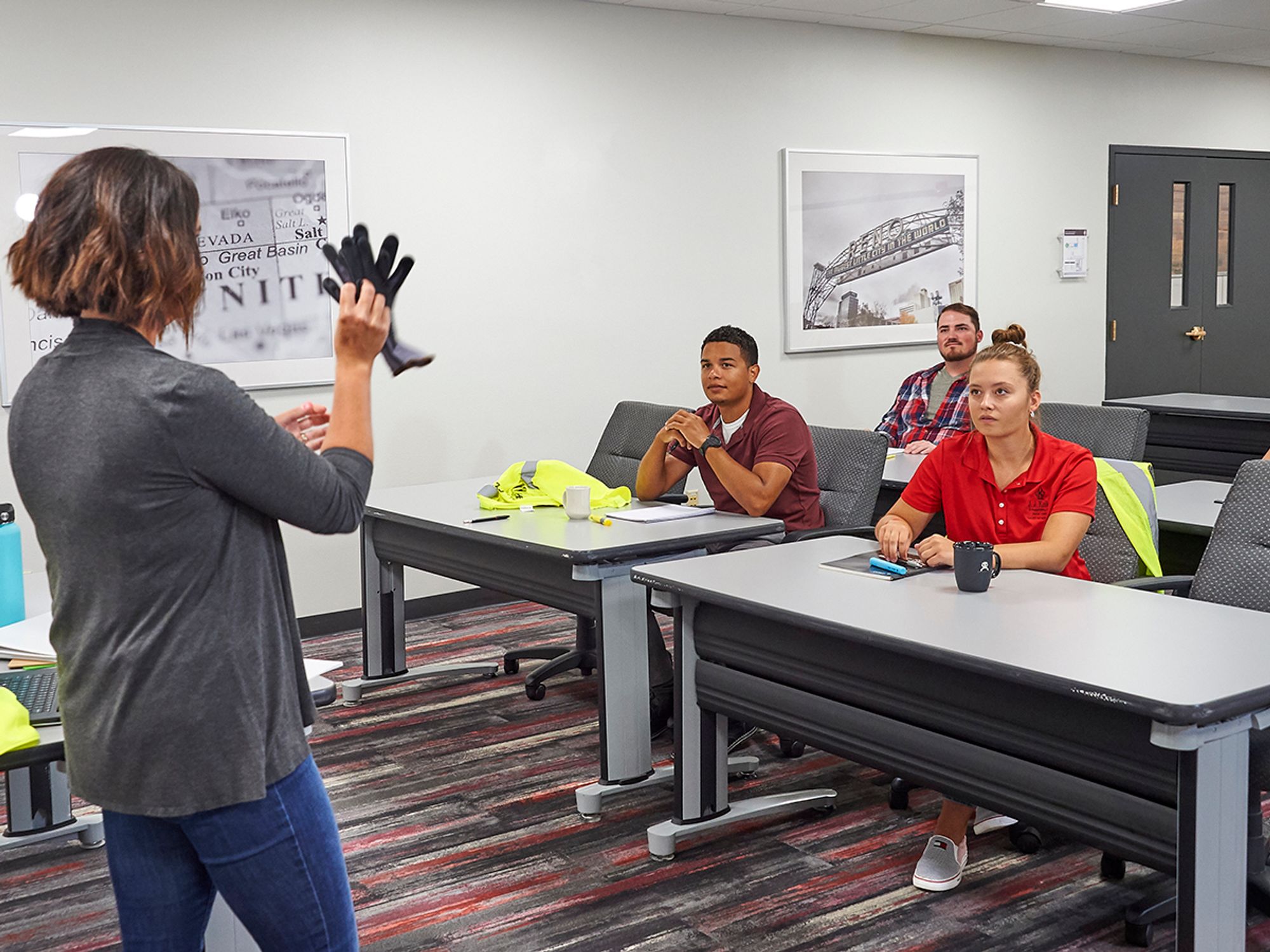Training and maintenance for eye and face PPE

- Employers must train employees on the specific type of eye or face protection that they will be using.
- Eye and face protection must be cleaned and disinfected regularly, and properly stored when not in use.
- Protective equipment should be inspected regularly for damage.
Each eye, face, or face-and-eye protector is designed for a particular hazard. Employers must make training specific, depending on what type of equipment employees use (i.e., goggles, face shields, spectacles). In selecting the type of protector, employers should consider the kind and degree of hazard and train employees on how to use, care for, and inspect their eye/face protection.
Maintenance and inspection requirements
It is essential that the lenses of eye protectors be kept clean. Continuous vision through dirty lenses can cause eye strain — often an excuse for not wearing the eye protectors. Daily inspection and cleaning of the eye protector with soap and hot water, or with a cleaning solution and tissue, is recommended.
Pitted lenses, like dirty lenses, can be a source of reduced vision and should be replaced. Deep scratches or excessively pitted lenses are apt to break more readily.
Slack, worn-out, sweat-soaked, or twisted headbands do not hold the eye protector in proper position. Visual inspection can determine when the headband elasticity is reduced to a point beyond proper function.
Goggles should be kept in a case when not in use. Spectacles in particular should be given the same care as one’s own glasses, since the frame, nose pads, and temples can be damaged by rough usage.
Personal protective equipment which has been previously used should be disinfected before being issued to another employee. Even when each employee is assigned protective equipment for extended periods, it is recommended that such equipment be cleaned and disinfected regularly.
Several methods for disinfecting eye-protective equipment are acceptable. The most effective method is to disassemble the goggles or spectacles and thoroughly clean all parts with soap and warm water. The Occupational Health and Safety Administration (OSHA) recommends that employers:
- Carefully rinse all traces of soap and replace defective parts with new ones.
- Swab thoroughly or completely immerse all parts for 10 minutes in a solution of germicidal deodorant fungicide.
- Remove parts from solution and suspend in a clean place for air drying at room temperature or with heated air.
- Do not rinse after removing parts from the solution because this will remove the germicidal residue which retains its effectiveness after drying.
The dry parts or items should be placed in a clean, dust-proof container, such as a box, bag, or plastic envelope, to protect them until reissue.
